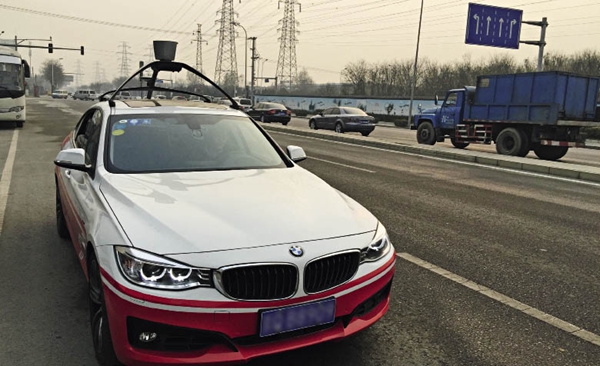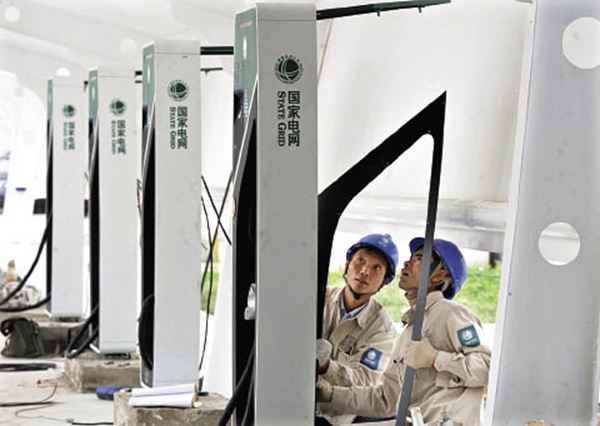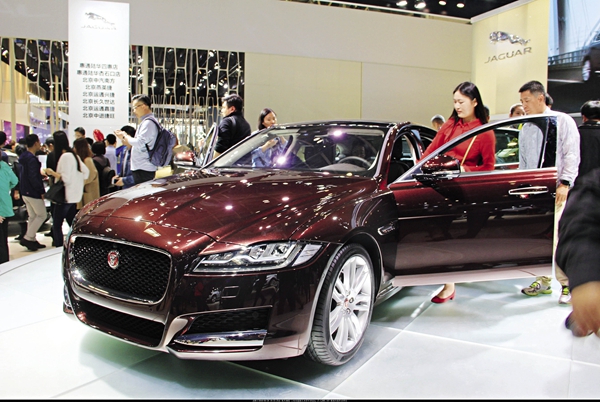By RAFAEL VALDEZ
By RAFAEL VALDEZ
THE development of electric cars, the growing demand for sophisticated sports cars, and the synergy between Internet companies and traditional automakers form the landscape of this promising industry.
Just 30 years ago, there were more bikes in Beijing than cars. However, during these three decades the Chinese car market has grown exponentially. In 1999, the country produced less than two million vehicles. In 2013, it produced and sold 22 million, more than the combined total for the United States and Japan, countries that follow China on the global auto industry podium. Last year, at 24.6 million, car sales in China reached a record high, according to the Chinese Association of Automobile Manufacturers (CAAM).

Baidu, China’s largest search engine, launches a fully autonomous test on mixed roads for its self-driving car.
In 2014, German automaker Volkswagen chose the Beijing Auto Show as the ideal opportunity to present its Hover Car, a two-seater disc-shaped pod that “levitates” a few centimeters above the ground. During the exhibition, other large transnational firms followed suit by introducing their latest innovations, so revealing their confidence in the Chinese market’s potential.
GDP growth and the emerging middle class are two important factors boosting this sector in China. However, input from the Chinese government has also played a key role, according to a 2014 industry report jointly conducted by CEDARS (a consulting company in Chinese automotive industry), China Europe International Business School (CEIBS), and IESE Business School. “After the global financial crisis, the government approved the Adjustment and Revitalization Plan for Automobile Industry that was in force between 2009 and 2011. The results were significant: Vehicle sales increased 45 percent in 2009 and 32 percent in 2010,” the study said. “Although the growth rate slowed in the next two years, once the plan was completed, sales again grew nearly 14 percent in 2013.”
At present, the focus of the Chinese government is on developing new energy cars. This was evident at the Beijing Auto Show 2016, where ecological vehicles accounted for more than 10 percent of the cars on display. Although currently sales of electric vehicles are marginal, it is clear that the trend is heading in that direction. Many Chinese automakers are, with government support, investing in research and development of vehicles that do not depend on fossil fuels. Chinese authorities have publicly declared their intention to make the country a world leader in new energy vehicles. The development of green vehicles, including electric cars, is part of a policy that has three objectives: reducing the country’s dependence on imported oil, mitigating adverse effects on the environment, and catapulting China to leader of clean technologies.

Technicians from the State Grid install charging stations in Hangzhou, Zhejiang Province.
Developing new energy vehicles, wherein electric cars predominate, was an explicit goal in this year’s Report on the Work of the Government. However, one of the primary factors influencing consumers’ decisions to buy electric cars is the availability of charging stations. Given this concern, the Beijing municipal government has stated that by 2020 there will be charging stations sufficient to supply 600,000 electric vehicles. The distance between charging stations in the city’s downtown will be less than 0.9 kilometers, as the government plan. It has the support of main car brands who are already preparing to meet that future demand.
One example is Volkswagen, which last April announced its plan to launch in China seven new electric car models in the next three to four years.
Symbol of Individuality
The increasing appeal of electric cars was not the only trend apparent at the Beijing Auto Show 2016. While the SUV (sport utility vehicle) remains in high demand, the sports coupe is also gaining ground. These prestigious cars are characterized by their sophisticated design and high price. They also reflect a new type of consumer who gives high priority to luxury. Generally single young professionals with high purchasing power, such consumers see cars as a way of signifying their individuality. For them, the car is not a familiar good, but a status symbol. This change in conception opens up a whole range of opportunities for auto brands.

A Jaguar displayed at the Beijing Auto Show 2016.
Accordingly, Audi unveiled at the Beijing Auto Show 2016 the sports coupe TTRS. Porsche, meanwhile, introduced its sports coupe type 718, and Jaguar presented its XF L, an extended version of the English midsize sedan, assembled in China and manufactured specifically for this market.
New Players
Local and foreign manufacturers agree that China is an enticingly promising market. Internet companies also want a slice of the pie. Last December, Baidu, China’s largest search engine, announced that its self-driving car had completed a fully autonomous test on a 30-km route of mixed roads under different weather conditions. Baidu is one of the tech companies jockeying to enter the car market. Google has the same goal, along with Samsung. In December 2015, the Korean firm announced the establishment of a new division within the company tasked with investigating auto technologies.
Does this represent a threat to the big car firms? Not necessarily. It can also be seen as an opportunity for Internet companies to form synergies with automakers, whereby each brings its accumulated know-how to their respective industries. It would not be the first time that Chinese companies established and fostered joint ventures. General Motors, for example, signed a strategic alliance with the Chinese state-owned SAIC Motor Corporation, based in Shanghai. Another case is Volkswagen, which manufactures cars jointly with the SAIC and FAW groups, the latter a state-owned company in Changchun, Jilin Province in Northeast China.
These alliances have enabled foreign firms to settle in China far more easily than if they had tried to go it alone. They have at the same time benefited Chinese firms by enabling them to absorb the knowledge of large German and Japanese companies that have spent years and millions on research and development. Such partnerships have also contributed to the internationalization of Chinese firms. One example is that of the Great Wall Company, which entered into a partnership with the Bulgarian Litex Motors with the aim of conquering the European market. Great Wall announced in March 2012 its opening in the Bulgarian town of Lovech of a factory where auto parts produced in China are assembled, and which produces 50,000 cars a year. They sell mainly in Bulgaria and neighboring countries.
With cars priced at €8,000 and pickup trucks at €15,000, Great Wall expects to gain ground rapidly in the competitive European market. The low price strategy has worked successfully in countries of Eastern Europe, Africa and Latin America. But if Chinese manufacturers want to become true global leaders they need to focus both their investment and efforts on research and development.